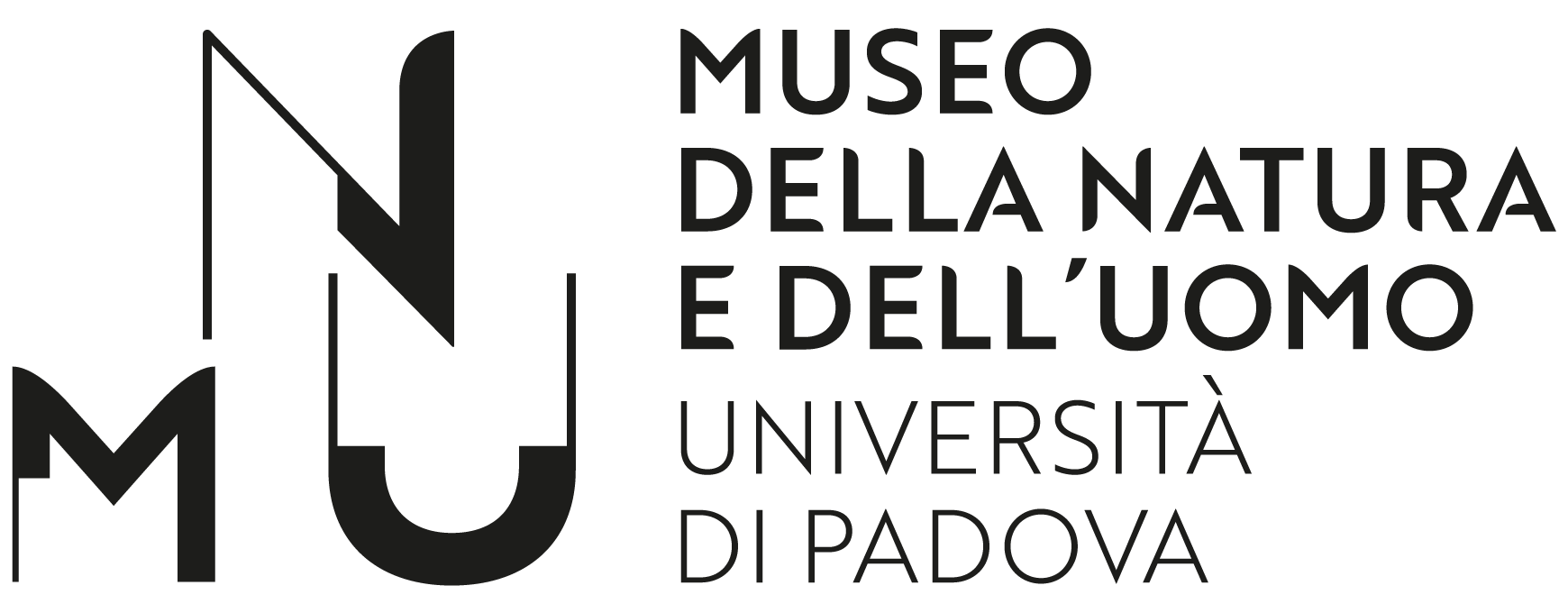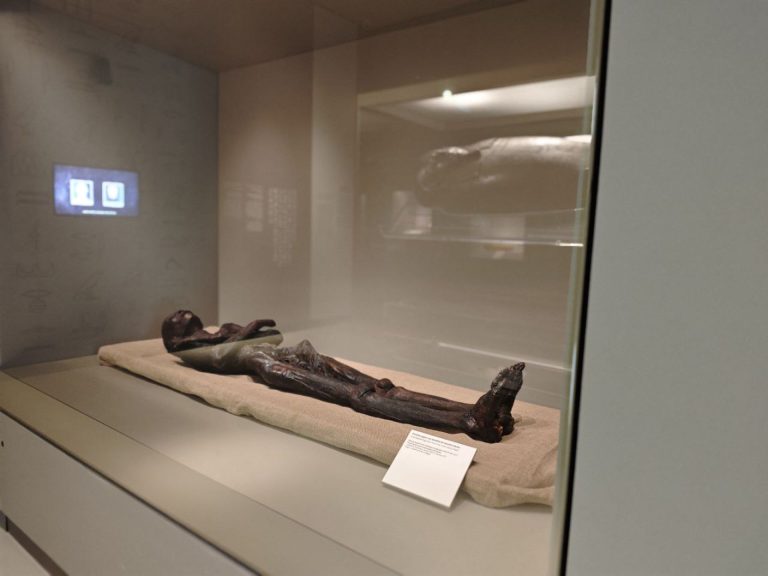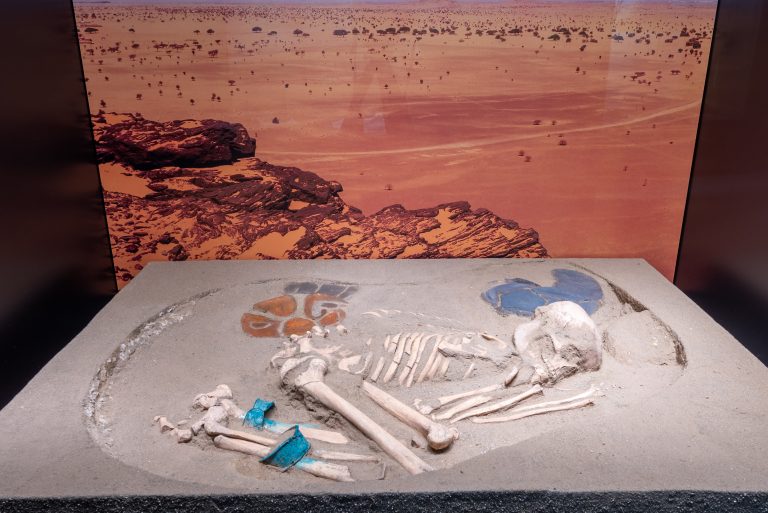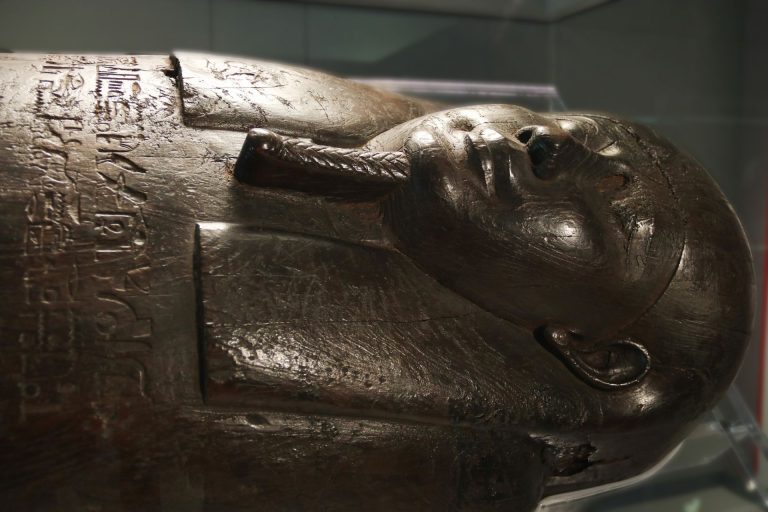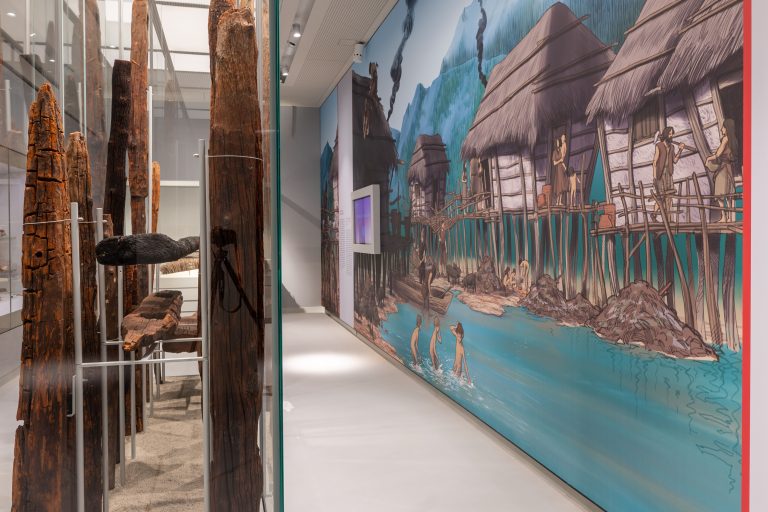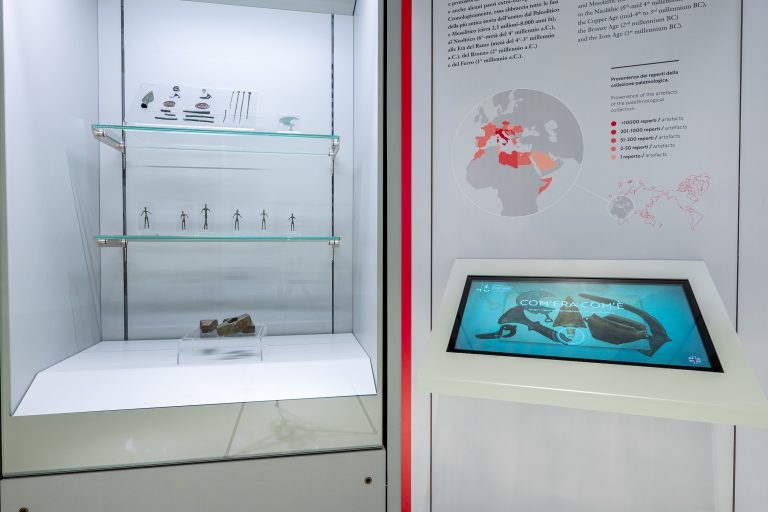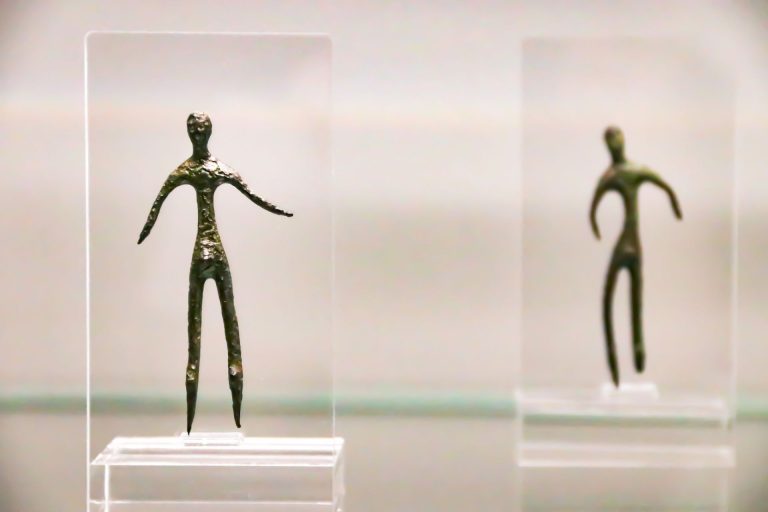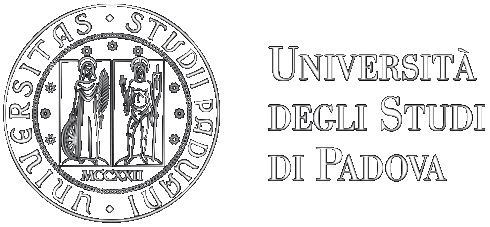The Geological era then gives way to the Anthropocene, the Age of Humankind, where visitors are immersed in the African landscape that gave our species our origin.
From those sunny lands, humans emerged in waves, first expanding into Eurasia some 120,000 years ago.
The first highly striking room, dedicated to these migrations “Out of Africa”, contains original and recreated versions of the most significant tombs from the extraordinary Sudanese site of Al-Khiday.
Another set of precious exhibits follows, including a Ptolemaic mummy with sarcophagus. An advanced forensic and facial reconstruction analysis of the priest contained therein shows how different scientific disciplines can contribute to the interpretation of the history of such finds.
The itinerary continues with a rich palethnology collection that offers a wide overview of the prehistory and protohistory of Europe and Italy.
The exhibition includes lithic, ceramic, metallic, textile, wooden and biological remains from different areas of North-East Italy, illustrating the types of settlements that followed one another over time: the worlds of caves, overhanging rock shelters, water dwellings (in particular the evocative piles of the Ledro stilt house), ‘castellieri’ (fortified protohistorical settlements) and early urban centres.
The collection of phrenological skulls and about seventy “racial masks” from the Cipriani collection are dedicated to the first steps (and missteps) taken by anthropological sciences.
There are also various anthropometric tools, which tell us a bit about this historical phase of anthropology. As a counterpoint, an important multimedia video explains clearly and simply why, scientifically speaking, human races do not exist!
